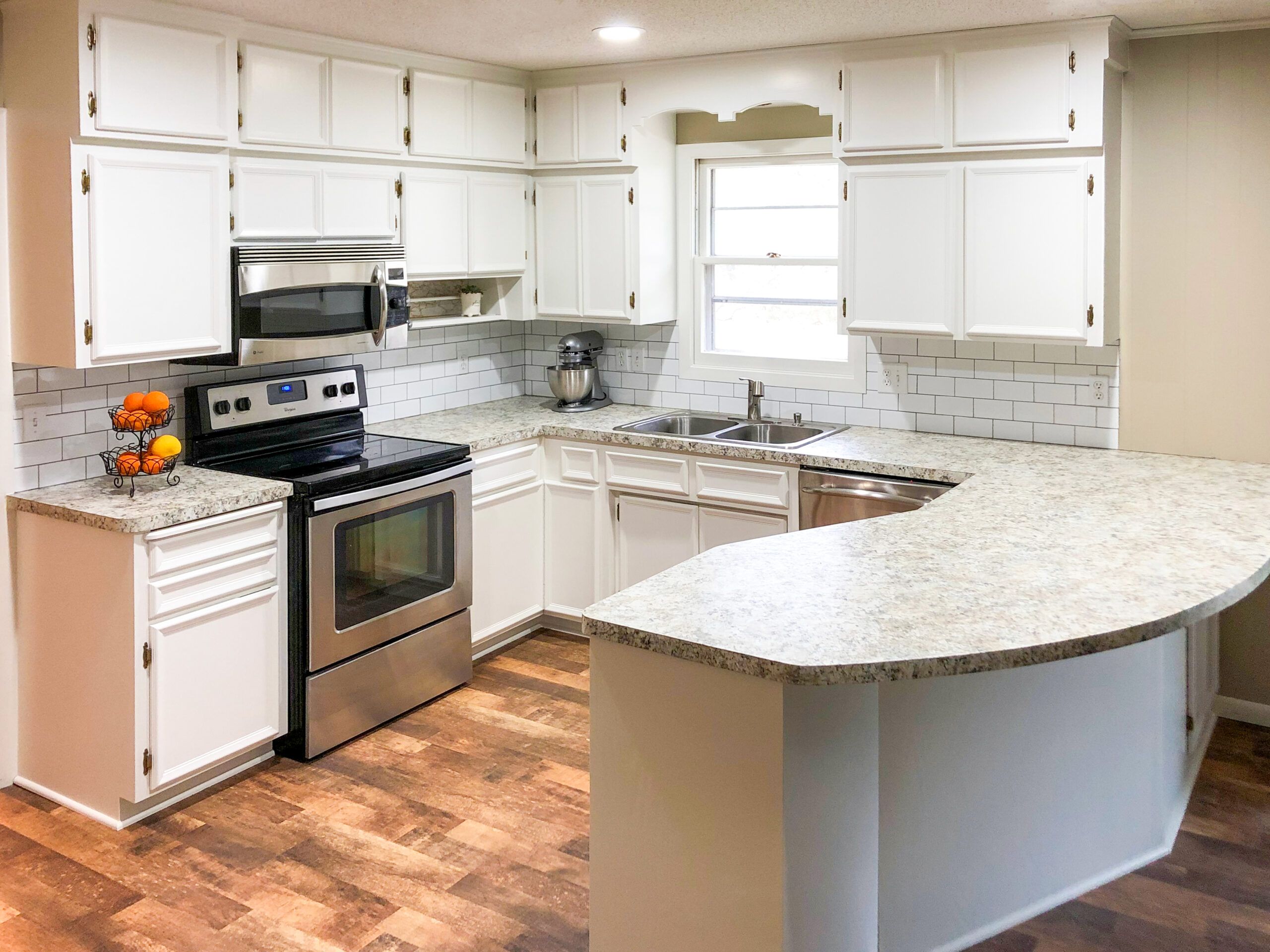Building a breakfast nook isn’t just about adding a table and chairs; it’s about crafting a cozy corner where mornings become magical and pancakes taste even better. This delightful journey will guide you through the process, from dreaming up the perfect design to hammering in the final nail (hopefully without hitting a finger!).
We’ll explore various styles, from rustic charm to sleek modern minimalism, ensuring your nook perfectly reflects your personality and kitchen’s quirks. Get ready to unleash your inner architect and create a breakfast haven you’ll adore.
Prepare to be amazed as we delve into the nitty-gritty details of space planning, material selection, and construction techniques. We’ll navigate the sometimes-tricky world of budgets, offering savvy tips to keep your project both beautiful and budget-friendly. Think of this as your personal breakfast nook construction bible, complete with inspirational ideas and practical advice that’ll have you saying “I can’t believe I built that!” in no time.
Defining the Ideal Breakfast Nook

Ah, the breakfast nook – that charming little corner where mornings become magical and even burnt toast tastes slightly less disastrous. But creating the perfect breakfast nook isn’t just about slapping a table and chairs together; it’s about crafting a space that whispers “good morning” in a language your soul understands.
Let’s delve into the delightful details.
Breakfast Nook Layout for Small Kitchens
Space is often the breakfast nook’s biggest nemesis, especially in smaller kitchens. The key is clever planning. Think window seats, banquette seating built into the wall, or even a cleverly positioned fold-down table. Maximize vertical space with open shelving above the seating area for extra storage.
A round table takes up less space than a square one, and consider using chairs that can be tucked neatly under the table when not in use.
The Benefits of Natural Light in Breakfast Nook Design
Natural light is the breakfast nook’s secret weapon against morning grumps. It instantly brightens the space, making it feel more welcoming and spacious. Imagine sunlight streaming in, illuminating your morning coffee and the smiling faces around the table. Position your nook near a window to maximize this natural glow, and consider sheer curtains to soften the light while maintaining privacy.
Comparing and Contrasting Breakfast Nook Styles
From the rustic charm of a farmhouse nook to the sleek minimalism of a modern design, the possibilities are as endless as your pancake recipes. A traditional breakfast nook often features ornate woodwork, while a modern design might boast clean lines and metallic accents.
Rustic styles typically use natural materials like wood and stone, creating a warm and inviting atmosphere. The style you choose should reflect your overall kitchen design and personal preferences.
Choosing the Right Seating for a Breakfast Nook
Seating is crucial. Uncomfortable chairs can turn a delightful breakfast into a painful ordeal. Consider built-in benches for space-saving and cozy vibes, or opt for comfortable chairs that complement your chosen style. Think about the height of the chairs in relation to the table, ensuring everyone can comfortably sit and eat.
Ergonomics matter, even at breakfast!
Space Planning and Design
Before you even think about hammering a nail, meticulous planning is your best friend. This ensures your breakfast nook fits seamlessly into your kitchen and doesn’t feel like an afterthought shoved into a corner.
Step-by-Step Guide for Planning Size and Placement
First, measure your kitchen space carefully. Determine the ideal size for your nook based on the number of people you’ll typically seat. Consider the flow of traffic in your kitchen; you don’t want your breakfast nook to obstruct movement. Sketch out different layouts on paper before committing to anything.
Consider using a kitchen design software to visualize your plans.
Incorporating Built-in Storage Solutions
Built-in storage is a breakfast nook’s best kept secret. Think bench seating with drawers underneath for storing linens, extra dishes, or even board games for family fun. Open shelving above the seating area can display your favorite mugs or cookbooks.
Clever storage maximizes space and keeps things organized.
Essential Considerations for Integrating a Breakfast Nook
Integrating a breakfast nook into an existing kitchen requires careful consideration of several factors to ensure a smooth and successful project.
| Feature | Consideration | Pro | Con |
|---|---|---|---|
| Plumbing | Proximity to existing plumbing lines | Easier installation of sinks or dishwashers | Potential for costly rerouting |
| Electrical | Access to electrical outlets | Convenient power for appliances | May require additional wiring |
| Ventilation | Adequate ventilation for cooking odors | Prevents lingering smells | May require additional venting |
| Structural | Load-bearing walls and floors | Ensures structural integrity | May require structural reinforcement |
Choosing Flooring and Wall Finishes
The flooring and wall finishes should complement the overall style of your breakfast nook and kitchen. Hardwood floors add warmth and elegance, while tile is easy to clean and durable. For walls, consider paint colors that enhance the mood and brightness of the space.
A soft, neutral palette can create a calming atmosphere, while bolder colors can add personality.
Furniture and Decor Selection
Once the structure is in place, it’s time to add the personality – the furniture and décor that will make your breakfast nook truly shine.
Table and Chair Options
The table and chairs are the stars of the show. Consider a farmhouse-style wooden table with mismatched chairs for a rustic feel, or a sleek glass-topped table with modern metal chairs for a contemporary look. The choice depends entirely on your style and the overall aesthetic you’re aiming for.
Don’t forget to account for the size and number of people who will be using the nook regularly.
Creative Lighting Solutions
Lighting sets the mood. A pendant light above the table creates a focal point, while recessed lighting provides ambient illumination. Consider adding a dimmer switch for flexibility, allowing you to adjust the brightness to suit the time of day and occasion.
String lights can add a whimsical touch, perfect for a more casual setting.
Color Palettes and Textures, Building a breakfast nook
Color and texture play a significant role in creating a visually appealing space. A calming pastel palette can create a serene atmosphere, while bolder colors can inject energy and personality. Mix and match textures – think a rough-hewn wooden table with smooth, upholstered chairs – to add visual interest and depth.
Unique and Personalized Decorative Elements

Personalized touches are what truly make a breakfast nook feel like home. Display family photos, artwork, or collections that reflect your personality and interests. Add plants for a touch of nature, or incorporate decorative items that complement your chosen style.
The possibilities are endless!
Building and Installation
With careful planning and execution, building a breakfast nook can be a rewarding DIY project. Let’s explore the process.
Check transforming old furniture with paint to inspect complete evaluations and testimonials from users.
Building a Simple Breakfast Nook Bench
A simple bench can be constructed from readily available lumber. Begin by building a sturdy frame, then attach plywood to create the seating surface. Add cushions for extra comfort. Consider adding storage drawers beneath the seating area for extra functionality.
Installing a Breakfast Nook Table and Chairs
Installing a table and chairs is relatively straightforward. Ensure the table is level and stable. The chairs should be comfortable and appropriately sized for the table and the space available. Consider using floor protectors to prevent scratching.
Potential Challenges and Solutions
Potential challenges include uneven floors, difficulties with electrical wiring, or unexpected structural issues. Addressing these challenges proactively through careful planning and preparation is key to a successful project. If you encounter unexpected problems, consulting a professional is always a good idea.
Necessary Tools and Materials
A list of necessary tools and materials will vary depending on the complexity of your project. However, basic tools such as a saw, drill, screwdriver, measuring tape, and level are essential. Materials will include lumber, screws, nails, plywood, stain or paint, and cushions.
Budget and Cost Considerations
Building a breakfast nook can be a cost-effective way to add value and charm to your home, but careful budgeting is essential.
Sample Budget Breakdown
A sample budget should include costs for materials (lumber, hardware, paint, etc.), labor (if hiring professionals), and any additional expenses such as permits or transportation. Prices will vary depending on your location and the materials you choose.
Building vs. Purchasing Pre-made Furniture
Building a breakfast nook can be more cost-effective than purchasing pre-made furniture, especially if you have DIY skills and access to affordable materials. However, purchasing pre-made furniture might save time and effort.
Saving Money While Building a High-Quality Nook
Saving money can be achieved by sourcing materials from discount stores, using reclaimed wood, or opting for less expensive finishes. Prioritize quality over quantity when choosing materials for structural components.
Finding Affordable Materials and Resources
Explore local lumber yards, salvage yards, and online marketplaces for affordable materials. Consider repurposing existing furniture or using DIY techniques to reduce costs.
Visual Inspiration: Building A Breakfast Nook
Let’s explore some inspiring breakfast nook designs to spark your creativity.
Coastal Themed Breakfast Nook
Imagine a breakfast nook bathed in soft blues and whites, with a weathered wooden table and wicker chairs. Seashells and nautical-themed décor add a touch of coastal charm. The overall feeling is light, airy, and relaxed, reminiscent of a seaside cottage.
Modern Minimalist Breakfast Nook
A modern minimalist breakfast nook features clean lines and a neutral color palette. A sleek white table paired with simple, uncluttered chairs creates a sense of calm and sophistication. Minimalist décor allows the architectural features of the nook to take center stage.
Rustic Farmhouse Breakfast Nook
A rustic farmhouse breakfast nook evokes warmth and comfort. A large, sturdy wooden table, perhaps with a distressed finish, is complemented by mismatched chairs and rustic décor. Warm earth tones and natural textures create a cozy and inviting atmosphere.
Final Conclusion
So, there you have it – a comprehensive guide to building your dream breakfast nook! From initial sketches to the satisfying thud of the last screw, this project is a testament to creativity, resourcefulness, and the undeniable joy of creating something beautiful for your home.
Remember, the most important ingredient isn’t just wood and paint, it’s the love and personality you pour into every detail. Now go forth and build something amazing – and don’t forget the bacon!
Questions Often Asked
What’s the average cost of building a breakfast nook?
Costs vary wildly depending on materials and complexity, ranging from a few hundred dollars for a simple bench to several thousand for a custom-built design.
Can I build a breakfast nook myself, or should I hire a contractor?
Whether you DIY or hire a contractor depends on your skills and comfort level. Simple designs are manageable for DIYers, while complex builds are best left to professionals.
How long does it take to build a breakfast nook?
The timeline depends on the project’s complexity and your pace. A simple bench might take a weekend, while a more intricate design could take several weeks.
What are some common mistakes to avoid when building a breakfast nook?
Poor planning (incorrect measurements!), neglecting proper support structures, and choosing unsuitable materials are common pitfalls.




